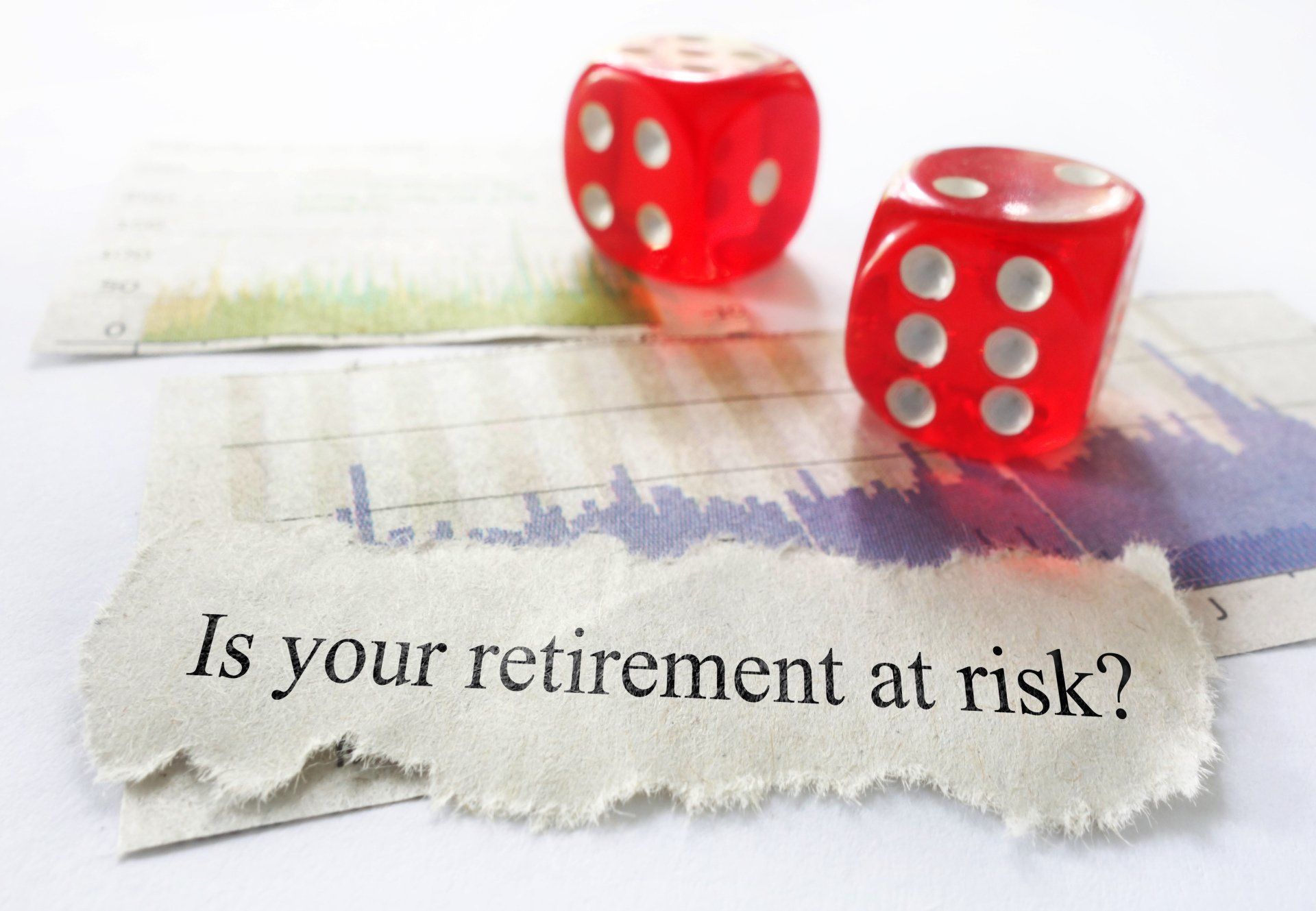What Are The 15 Risks Threatening Your Retirement?
Financial stress wreaks havoc on mental health. When thinking about retirement, most people plan and address one risk, market risk.
At Retire Safety First we believe everyone has a right to a safe, secure and predictable retirement. Our goal is to remove the fear and uncertainty out of retirement, to provide peace of mind for retirement.
1. Market Risk
Market risk is the possibility that an individual will experience losses due to the overall performance of investments. Market risk cannot be eliminated through diversification, though it can be hedged in other ways. Imagine the feeling of a 30% loss in your retirement savings when you are this close to retirement!
2. Longevity Risk
One of the biggest concerns for retirees is outliving their money. If you design your withdrawal strategy with an assumed death of age 82 but you live until 90, there is a danger of exhausting your savings.
3. Inflation Risk
Inflation is the silent threat to your retirement. The risk is assuming too low of a rate or not taking it into consideration at all when planning your expenses. Like the problem with longevity, if you choose too high of a number or too low of a number, your withdrawal rate may not be appropriate to support your desired lifestyle.
4. Interest Rate Risk
Interest rates directly affect your retirement whether they move up or down. The amount of money you receive from savings accounts, CD’s or bonds will increase and decrease with interest rates. This can make your retirement stressful and unpredictable.
5. Sequence Of Returns Risk
You are exposed to sequence of returns risk when a down market takes place during the early years of your retirement. If you are required to take income out and the market or your account is down, then you will be taking a higher distribution rate than you might have initially planned. In this situation, you may need to take less out to make sure you don’t out life your savings or change your spending habits.
6. Excess Withdrawal Risk
The baseline of retirement planning is knowing what your monthly budget will be. A safe withdrawal rate assumes we can take out a certain percentage of our savings each year without running out of money. Everyone’s life and financial circumstances are different and there is no universally appropriate rate.
7. Health Care Expense Risk
The average 65-year-old couple in 2019 will need $390,000 in today’s dollars during their retirement, excluding long-term care, to cover health care expenses according to HealthView Services. You never know when or how long you may be sick, so being prepared for unexpected medical expenses will help you have peace of mind.
8. Long-Term Care Risk
You do not know if, when, or how long you may need long term care. According to the U.S. Department of Health and Human Services, a person turning 65 today has almost a 70% chance of needing long-term care services. The average cost of a semi-private room in CT nursing facilities is $157,700, according to the State of CT Office of Policy Management.
9. Forced Retirement Risk
Did you know 60 percent of people retire earlier than planned due to unforeseen circumstances according to USA Today? Your family, health, or job loss could make the choice of retirement for you. Retiring earlier than planned forces you to draw from savings earlier than anticipated and takes years of saving away. For this reason, at age 60 your money should look as if you are already retired.
10. Public Policy Risk
One thing that is certain is the government changes laws continuously. Social Security and Medicare are frequently undergoing adjustments that can make your retirement unpredictable. Not only do you need to be aware of changes the federal government makes but states can make policy changes that could impact you significantly as well.
11. Unexpected Financial Responsibility Risk
Life in unpredictable. You could find yourself being the primary caretaker of a loved one. Even knowing you may not be able to afford to help, many will care for their loved parent, child, or grandchild. This will add stress to your budget.
12. Frailty/Financial Elder Abuse Risk
We all hate to admit it, but as we age, we lose a step or two mentally and physically. We are more at risk with mismanaging our money. This could be as simple as forgetting to pay a bill or as dangerous as falling for a scam. Unfortunately, the elderly are at a higher risk for becoming financially abused than the rest of the population.
13. Employer Insolvency Risk
Pensions are a great benefit that some employers will offer to their retired staff, but you should never fully rely upon this income as this could prove costly. These benefits could dissipate as any company can go bankrupt or worse, your old company decides to stop their benefit programs. You need to have multiple sources of income should this situation happen.
14. Loss Of A Spouse Risk
Dealing with the emotional turmoil of losing a loved one is painful enough. Dealing with the loss of income on top of it is overwhelming. If the primary breadwinner dies first, there is likely a reduction of income which can make matters worse. Your Social Security could drop between 33 and 50 percent.
15. Liquidity Risk
While stocks and bonds are easy to sell, some things are not. Houses, businesses, and collectables may take time to sell. You may have to sell them when the market for them is low, or you may not be able sell them at all. If you are relying on income from one of these sources, you should be prepared to wait or take less than expected.
At Retire Safety First, we look at all these risks and hope for the best but plan for the worst. Now is the time to pursue your passions, to have new experiences, and to do more of what you love with the people you love. You should be able to spend more time living your life to the fullest and not worrying about these risks keeping you up at night.
To learn about each of these risks and how they may affect your retirement, please contact us.
Learn how the Retire Safety First approach can help give you the retirement you have been dreaming of.
Call us today at 860-757-3644












